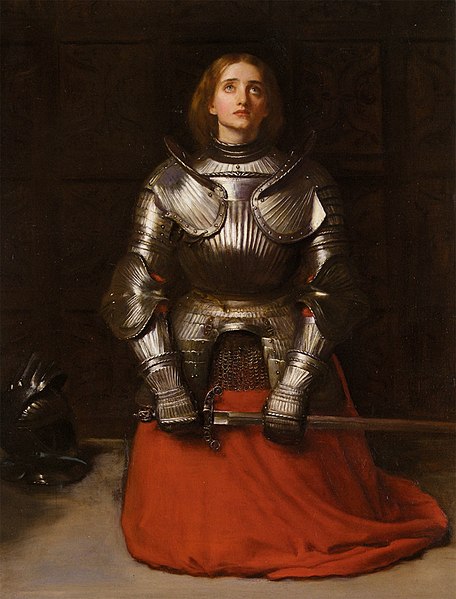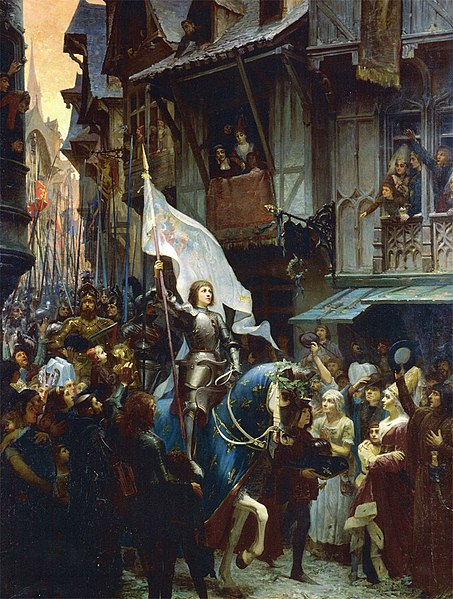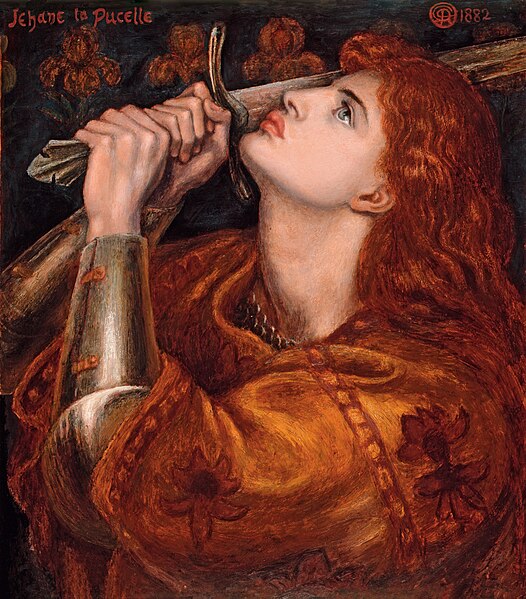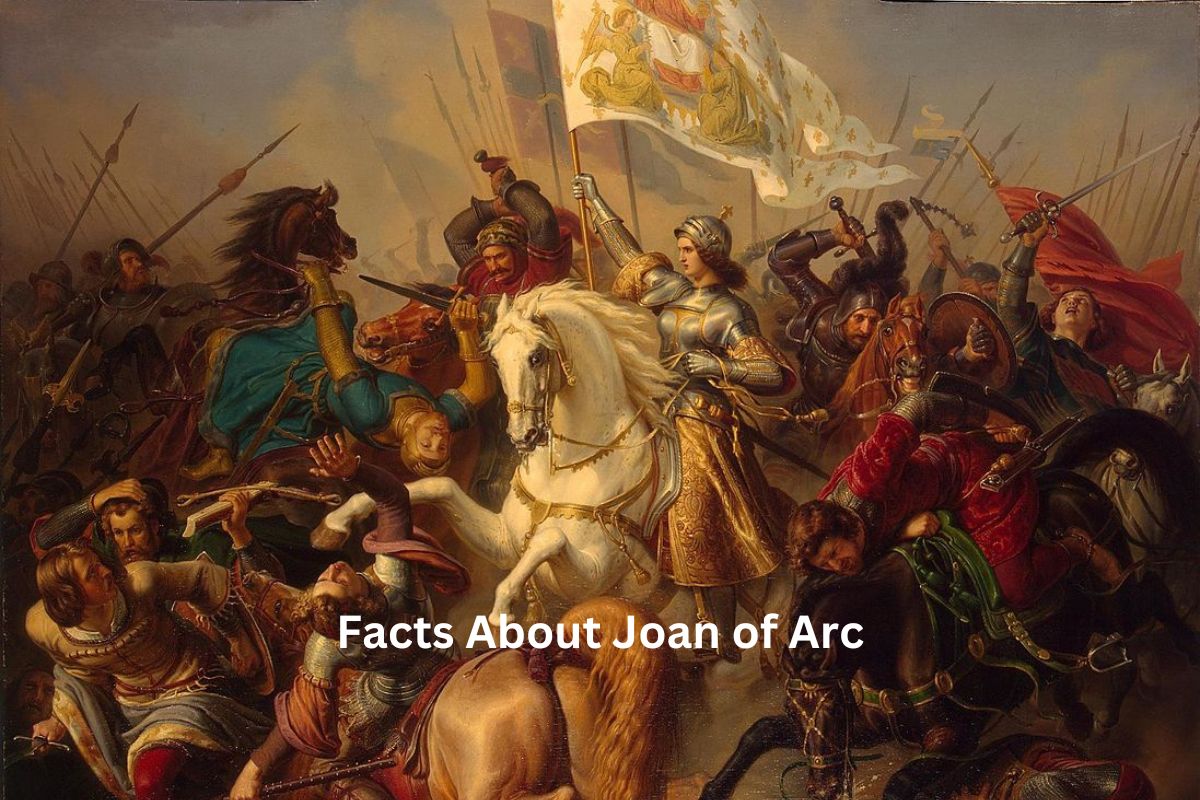Joan of Arc, born in 1412 in Domrémy, France, is a historical icon known for her pivotal role in the Hundred Years’ War.
Driven by divine visions, she emerged as a fearless military leader who rallied French forces to victory, particularly during the siege of Orléans.
Her unorthodox attire and eventual capture and trial for heresy add layers of intrigue to her story.
Canonized as a saint, Joan’s legacy endures as a symbol of faith, nationalism, and unwavering determination in the face of adversity.
Joan of Arc Facts
1. Born in 1412 in Domrémy, France
Joan of Arc was born around 1412 in the small village of Domrémy in northeastern France. She was born to Jacques d’Arc, a farmer, and Isabelle Romée.
Also Read: Timeline of Joan of Arc
Domrémy was located in the region of Lorraine, which was at the time part of the disputed territory between France and the Holy Roman Empire. This region’s tumultuous history likely influenced Joan’s later actions and beliefs.

2. Had religious visions and heard voices
From a young age, Joan of Arc claimed to have experienced visions and heard voices of saints, particularly St. Michael, St. Catherine, and St. Margaret. These visions began around the age of 13.
According to Joan, these heavenly voices instructed her to help the French crown reclaim territory from the English during the Hundred Years’ War. She believed she had a divine mission.
3. Played a key role in the Hundred Years’ War
The Hundred Years’ War was a protracted conflict that lasted from 1337 to 1453, and it involved a series of battles and disputes between the Kingdom of France and the Kingdom of England over control of the French throne.
Also Read: Timeline of the Hundred Years’ War
By the time Joan of Arc emerged on the scene, the war had been raging for decades, with significant portions of French territory under English control or allied with them.
Joan’s military leadership and her influence on the Dauphin, the future Charles VII of France, were pivotal in turning the tide of the war in favor of the French. Her successful campaigns helped lift the siege of Orléans and paved the way for Charles VII’s coronation.

4. Led the French army to victory at Orléans
Joan of Arc’s military leadership is one of her most significant contributions to the Hundred Years’ War and French history.
In 1429, at the age of 17, Joan successfully persuaded Charles VII to allow her to lead a French army to the besieged city of Orléans. The city had been under English siege for months, and its fall would have been a significant blow to the French cause.
Joan’s arrival and leadership during the siege of Orléans inspired the French troops and instilled newfound confidence. She devised successful military strategies, and the siege was eventually lifted on May 8, 1429, marking a turning point in the war.
5. Wore men’s clothing during battle
Joan of Arc is well-known for her unique attire and appearance during her military campaigns. She often wore men’s clothing, including armor and a short haircut.
Her decision to dress as a man was practical, as it allowed her to move freely among soldiers and leaders without drawing unnecessary attention to her gender.
Joan’s choice of clothing was also influenced by her visions, which she believed were instructions from God, including the instruction to wear men’s clothing.
6. Captured by the Burgundians and sold to the English
After achieving several military successes, Joan of Arc was captured by the Burgundians, who were allies of the English, in 1430.
She was subsequently sold to the English and put on trial for heresy, among other charges. Her trial took place in Rouen, and it was conducted by ecclesiastical authorities.
7. Put on trial for heresy and executed in 1431
Joan was accused of dressing in men’s clothing, claiming divine revelations, and challenging the authority of the Church.
Despite her courageous defense, she was found guilty of heresy and sentenced to be burned at the stake. She was executed on May 30, 1431, at the age of 19.

8. Canonized as a saint in 1920
Joan of Arc’s trial and execution in 1431 had a profound impact on her legacy. Although she was initially condemned as a heretic, her reputation as a national hero and martyr grew over time.
In 1456, 25 years after her death, a posthumous trial was conducted. The trial declared her innocent of heresy and affirmed her actions as those of a devout and faithful Christian.
This posthumous trial played a crucial role in rehabilitating Joan’s image, and it paved the way for her eventual canonization.
9. Inspires literature, art, and film
Joan of Arc’s story has left an indelible mark on literature, art, and culture. She has been the subject of numerous plays, books, paintings, and films.
Renowned playwrights like William Shakespeare and George Bernard Shaw have written about her, and she has been depicted in countless works of art as a symbol of heroism, faith, and national pride.
Her story continues to inspire artists and writers to this day, ensuring that her legacy endures through various forms of artistic expression.
10. Symbol of French nationalism and heroism.
Joan of Arc remains a symbol of courage, faith, and determination. She is celebrated as a national hero in France and is considered a symbol of French nationalism.
Her memory is commemorated annually in France, particularly in her birthplace of Domrémy and in Orléans, where she played a pivotal role in lifting the siege.
Her legacy also extends beyond France, as she is admired worldwide for her unwavering commitment to her beliefs and her bravery in the face of adversity.
